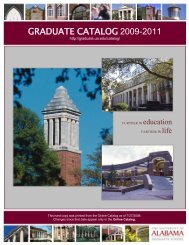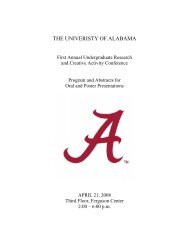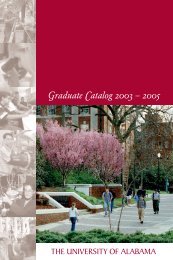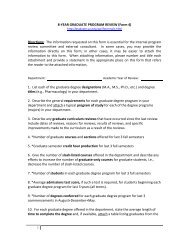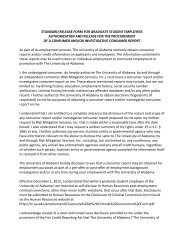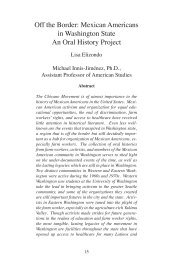Letters from a Planter's Daughter: Understanding Freedom and ...
Letters from a Planter's Daughter: Understanding Freedom and ...
Letters from a Planter's Daughter: Understanding Freedom and ...
Create successful ePaper yourself
Turn your PDF publications into a flip-book with our unique Google optimized e-Paper software.
Susanna Townsend was a former slave living <strong>and</strong> working in Reconstruction-era<br />
urban Ohio, the daughter of the white planter Samuel <strong>and</strong><br />
the fourth of his seven enslaved African-American mistresses. The Civil<br />
War had drastically devalued the Townsend property, <strong>and</strong> neither Susanna<br />
nor any of her half-siblings would ever receive a quarter, if that, of their<br />
inheritance in the following years. 5 She was mixed-race—perhaps, as a<br />
Freedman’s Bureau agent later said of her half-sister Milcha, “the woman<br />
is nearly white”—but whether or not her appearance could fool Cincinnati<br />
society, her father’s attorney knew she was the daughter of an enslaved<br />
woman. If S.D. Cabaniss replied to Susanna’s 4 June letter, the archive<br />
holds no record; he certainly never sent money by the tenth of that month.<br />
In five months, Susanna would give birth in her half-brother Wesley’s<br />
home outside of the city—a hint at her urgency to marry <strong>and</strong> leave the<br />
state. In another six, Susanna would be dead.<br />
In her sixteen years, Susanna straddled slavery <strong>and</strong> freedom, the antebellum<br />
South <strong>and</strong> the post-war Northwest, a life of in-between’s on the<br />
borderl<strong>and</strong>s of race <strong>and</strong> society. She had an uncertain place within the<br />
extended Townsend family: as the youngest child with no living parents<br />
<strong>and</strong> no full siblings, she could neither support herself independently nor<br />
depend on her extended family supporting her indefinitely. She had an<br />
uncertain inheritance: when the Civil War broke out, the new Confederate<br />
government prohibited Cabaniss, living in Alabama, <strong>from</strong> sending any<br />
money into the Union. For Susanna, this ban meant serious financial insecurity.<br />
Finally, she had an uncertain racial status within the society at large.<br />
Because she was a “white-looking” woman of some promised financial<br />
means, Susanna upset categories of a social hierarchy that equated African<br />
ancestry with powerlessness <strong>and</strong> inferiority. 6 Despite these potential<br />
advantages, as a fifteen-year-old mixed-race girl, Susanna remained subject<br />
to the machinations of the senior white lawyer. Occupying these inbetween<br />
spaces meant a life of inherent instability—poignantly expressed<br />
in her letter of 4 June, in which she explains her young man’s offer of<br />
marriage <strong>and</strong> promise of security: He says I have been going around long<br />
enough without anyone to take care of me.” 7 The liminality of her circumstances<br />
drew Susanna Townsend to this seemingly desperate point in the<br />
147<br />
<strong>Letters</strong> <strong>from</strong> a Planter’s <strong>Daughter</strong><br />
5 Frances Cabaniss Roberts, An Experiment in Emancipation of Slaves by an Alabama<br />
Planter (Tuscaloosa: University of Alabama, 1940).<br />
6 Mary Niall Mitchell, Raising <strong>Freedom</strong>’s Child: Black Children <strong>and</strong> Visions of the Future<br />
After Slavery (New York: New York University Press, 2008).<br />
7 Susanna Townsend to S. D. Cabaniss, letter dated June 4, 1868.



